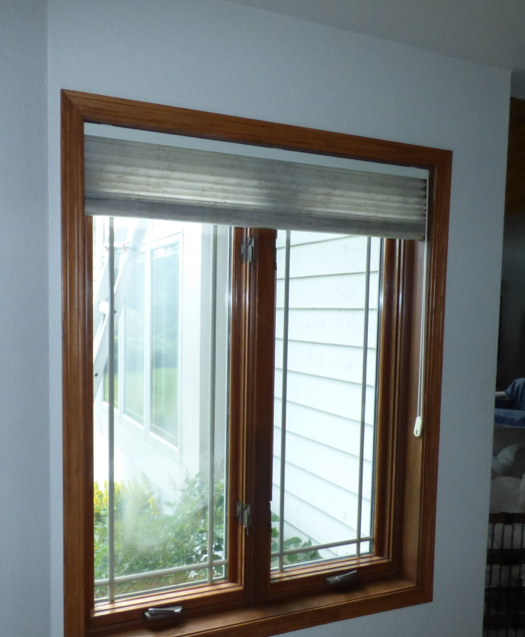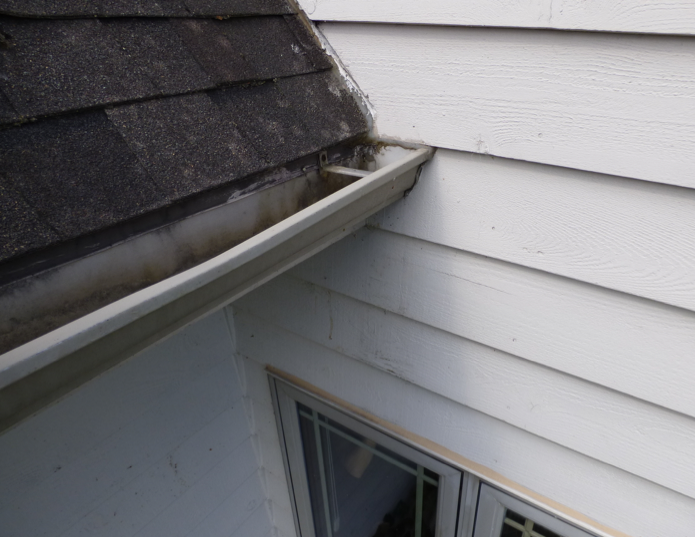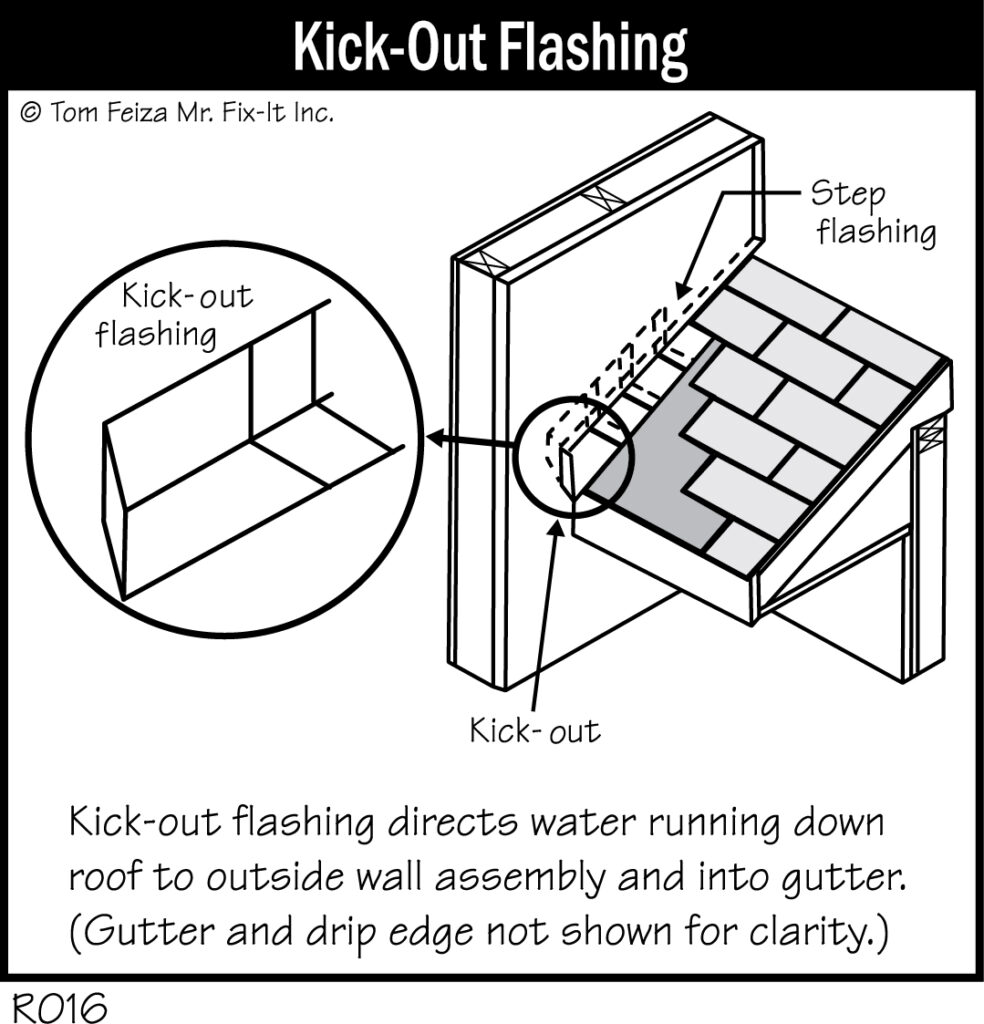By Tom Feiza, Mr. Fix-It, Inc.

Twenty years ago, few people had ever heard the term “kickout flashing,” but things have changed. Old homes leaked so much air that walls always dried out. Today’s homes are much tighter, and walls hold moisture. Walls, siding and OSB will rot if water enters the wall. Kickout flashing has become essential.
Here’s a great example
In one case I investigated, routine inspection of a window interior doesn’t hint at any damage (photo: Questionable Window Trim). A home inspector would never suspect an issue, and in fact there is no visible issue to report. But the owner showed me ground-up wood on the windowsill. She explained that when it rained, water dripped from the upper trim. The “ground-up wood” looked like carpenter ant frass (droppings).

We lifted the upper window casing/trim and discovered rotted wood – and dark frass from carpenter ants (photo: Wet Mess Beneath Trim.) This major issue would be invisible during a normal home inspection.

So what else was going on?
On the outside, the wood siding and trim of this 20-year-old home seemed to be in good condition. Three – yes, three – contractors had examined the leaky window. They applied liquid flashing (caulk) at the step flashing and sealed the cap flashing at the window.
Whenever I see window leaks, I always suspect missing flashing or improper layering of the weather-resistant barrier under the siding. Sure enough, when I looked at this window from the outside, the problem was obvious: the gutter terminated at a sidewall with no kickout flashing (photo: Missing Kickout Flashing).

A preventable problem
Properly installed, kickout flashing should channel water down the outside wall assembly and into the gutter (illustration R016). Compounding this particular water problem was a gable roof and a downspout directing rainwater to the roof above the end of the gutter.

The fresh caulk which the contractors applied between the siding and the top of the window cap flashing may have worsened the problem. Horizontal flashing or cap flashing should never be caulked. Because all types of siding leak, the cap flashing should be installed underneath the weather-resistant barrier to capture water and route it out of the wall assembly over the window.
The solution here: remove the siding above and around the window. Check the weather-resistant barrier and install kickout flashing. Replace rotted materials. And finally, route the upper roof drainage away from the area.
You must catch this obvious defect
Inspecting only the window and the wall from the inside would never reveal the source of the problem, so you must always identify the lack of kickout flashing. A contractor smart enough to notice the missing flashing would say, “The home inspector should have seen this defect.” Don’t let them say that about you.
